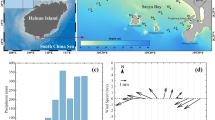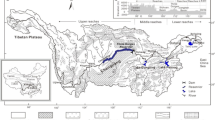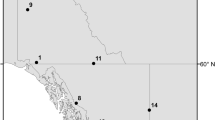Abstract
Desertification has been notably expanding in China in the recent decade, especially in North China where dust/sand storm (DSS) frequently assaulted local communities. Analyses in marine ecology found that the earth ecosystem could be able to complement nutrient silicon for keeping sustainable development of marine ecosystem, and decreasing CO2 concentration in the atmosphere; as a result, the area of desertification would be enlarged. Modern human being activities have resulted in constant changes in the amount of silicon transport from land into sea, leading to oversupply of nitrogen and phosphorus but silicon in seawater. The proportion of nitrogen, phosphorus and silicon was seriously imbalanced and the limitation of silicon for phytoplankton growth has become more serious. The silicon deficiency has damaged the marine ecosystem in coastal regions and slowed down the carbon sedimentation in the atmosphere of the world. The authors believe that the continual discharge of CO2 into the atmosphere is the cause for the global warming including marine water temperature rise. Consequently, the earth ecosystem would have to trigger its complementary action to resume to the silicon balance by algae bloom in seawater for reducing air and water temperatures. In order to complement nutrient silicon into the sea, the ecosystem would transport silicon via the atmosphere; therefore, the desertification in the inner land is a natural reaction. As marine phytoplankton booming can reduce the CO2 concentration in the atmosphere and further ease the green-house effect, during this process, a large amount of silicon are demanded by the ecosystem, which human being are unable to stop desertification from happening but slow down the progress and ease the risk. Therefore, as an important role in earth ecosystem, people should reduce the CO2 discharge into the atmosphere first; then, the normal function of river transporting silicon must be restored. In this way, the CO2 in the atmosphere can be kept in balance, the global warming slowed down, marine ecosystem development sustained, the drought in inner land eased, and the desert gradually under-controlled.
Similar content being viewed by others
Reference
Armstrong, F. A. J., 1965. Silicon. In: Riley, J. P. and G. Skirrow eds, Chemical Oceanography, Academic Press, London, Vol. 1, Chap. 10.
Bienfang, P. K., P. J. Harrison and L. M. Quarmby, 1982. Sinking rate response to depletion of nitrate, phosphate and silicate in fourine diatoms. Mar. Biol. 67: 295–302.
Brzezinski, M. A., 1992. Cell-cycle effects on the kinetics of silicic acid uptake and resource competition among diatoms. Journal of Plankton Research 14: 1 511–1 536.
Brzezinski, M. A., R. J. Olson and S. W. Chisholm, 1990. Silicon availability and cell-cycle progression in marine diatoms. Marine Ecology Progress Series 67: 83–96.
Conley, D. J. and T. C. Malone, 1992. Annual cycle of dissolved silicate in Chesapeake Bay: implications for the production and fate of phytoplankton biomass. Marine Ecology Progress Series 81: 121–128.
Dugdale, R. C., 1972. Chemical oceanography and primary productivity in upwelling regions. Geoforum 11: 47–61.
Dugdale, R. C. and J. J. Goering, 1967. Uptake of new and regenerated forms of nitrogen in primary productivity. Limnology and Oceanography 12: 196–206.
Dugdale, R. C., 1983. Effects of source nutrient concentrations and nutrient regeneration on production of organic matter in coastal upwelling centers. In: Suess, E. and J. Thiede, eds. Coastal Upwelling. Pt. A. Plenum Press, p New York. p. 175–182.
Dugdale, R. C., 1985. The effects of varying nutrient concentration on biological production in upwelling regions. CalCOFI Report. 26: 93–96.
Dugdale, R. C., B. H. Jones, J. J. Macclsaac et al., 1981. Adaptation of nutrient assimilation. In: Platt, T., ed., Physiological bases of phytoplankton ecology. Canadian Bulletin of Fisheries and Agriculture Sciences 210: 234–250.
Huang, S. G., J. D. Yang, W. D. Ji, X. L. Yang and G. X. Chen, 1983. Proceedings of International Symposium on Sedimentation on the Continental Shelf with Special Reference to the Fast China Sea. Vol. 1, China Ocean Press, Beijing, 241–249.
Humborg, C., V. Lttekkot, A. Cociasu, and B. von Bodungen, 1997. Effect of Danube River dam on Black Sea biogeochemistry and ecosystem structure. Nature 386: 385–388.
Liu, Z. Y., 2002. Why does dust/sand storm increase? China National Conditions and Strength 6: 34–35. (in Chinese)
Lewin, J. C., 1962. Silicification. In: Physiology and Biochemistry of the Algae, R. A. Lewin, ed, Academic Press, New York. pp. 445–455
Paytan, A., 2000. Global change: Iron uncertainty. Nature 406: 468–469.
Sakshaug, E., D. Slagstad and O. Holm-Hansen, 1991. Factors controlling the development of phytoplankton blooms in the Antarctic Ocean—a mathematical model. Marine Chemistry 35: 259–271.
Stefánsoon, U. and F. A. Richards, 1963. Processes contributing to the nutrient distributions off the Columbia River and strait of Juan de Fuca. Limmol. Oceanogr. 8: 394–410.
Toggweller, J. R., 1999. An ultimate limiting nutrient. Nature 400: 511–512
Turner, R. E. and N. N. Rabalais, 1991. Changes in Mississippi River water quality this century—implications for coastal food webs. Science 41: 140–147.
Wang, T., W. Wu, X. Xue, Q. W. Sun, W. M. Zhang, Z. W. Han, 2004. Spatial-temporal changes of sandy desertified land during last 5 decades in northern China. Acta Geographica Sinica 2, 203–212. (In Chinese)
Yang, X. L. and M. Y. Zhu, 1990. The new development of phytoplankton metabolism study. J. of Oceanography of Huanghai & Bohai Seas 3: 65–72.
Yang, D. F., H. Li, Y. M. Zhang et al., 2000. The factor and way of limiting nutrient for the growth of phytoplankton. Marine Sciences 24(12): 47–50.
Yang, D. F., Z. H. Gao, Y. Chen et al., 2002a. The Biogechemical Process of Silicon. Marine Sciences 26(3): 35–36.
Yang, D. F., J. Zhang, J. B. Lu et al., 2002b. Examination of silicate limitation of primary production in the Jiaozhou Bay, North China I. Silicate being a limiting factor of phytoplankton primary production. Chin. J. Oceanol. Limnol. 20(3): 208–225.
Yang, D. F., J. Zhang, Z. H. Gao et al., 2003a. Examination of silicate limitation of primary production in the Jiaozhou Bay, North China II. Critical value and time of silicate limitation and satisfaction of the phytoplankton growth. Chin. J. Oceanol. Limnol. 21(1): 46–63.
Yang, D. F., Z. H. Gao, Y. Chen, J. Zhang and P. G. Wang, 2003b. Examination of silicate limitation of primary production in the Jiaozhou Bay, North China III. Judgment method, rules and uniqueness of nutrient limitation among N, P and Si. Chin. J. Oceanol. Limnol. 21(2): 114–133.
Yang, D. F., Z. H. Gao, J. Zhang, W. L. Cui, Q. Shi, 2004a. Examination of daytime length’s influence on phytoplankton growth in Jiaozhou Bay, China. Chin. J. Oceanol. Limnol. 22(1): 70–82
Yang, D. F., Z. H. Gao, Y. Chen, P. G. Wang, P. Y. Sun, 2004b. Examination of seawater temperature’s influence on phytoplankton growth in Jiaozhou Bay, North China. Chin. J. Oceanol. Limnol. 22(2): 166–175.
Yang, D. F., Y. Chen, Z. H. Gao, J. Zhang, and F. Wang, 2005a. Silicon limitation on primary production and its destiny in Jiaozhou Bay, China IV. Transect offshore the coast with estuaries. Chin. J. Oceanol. Limnol. 23(1): 72–90.
Yang, D. F., Z. H. Gao, Y. Chen, P. G. Wang, P. Y. Sun and S. Liu, 2005b. Silicon limitation on primary production and its destiny in Jiaozhou Bay, China V. Silicon deficit process. Chin. J. Oceanol. Limnol. 23(2): 169–175.
Author information
Authors and Affiliations
Corresponding author
Additional information
Funded by the Director’s Foundation of the Beihai Monitoring Center and the State Oceanic Administration and Chinese Academy of Sciences (KZCX 2-207).
Rights and permissions
About this article
Cite this article
Yang, D., Wu, J., Chen, S. et al. The teleconnection between marine silicon supply and desertification in China. Chin. J. Ocean. Limnol. 25, 116–122 (2007). https://doi.org/10.1007/s00343-007-0116-7
Received:
Accepted:
Issue Date:
DOI: https://doi.org/10.1007/s00343-007-0116-7




